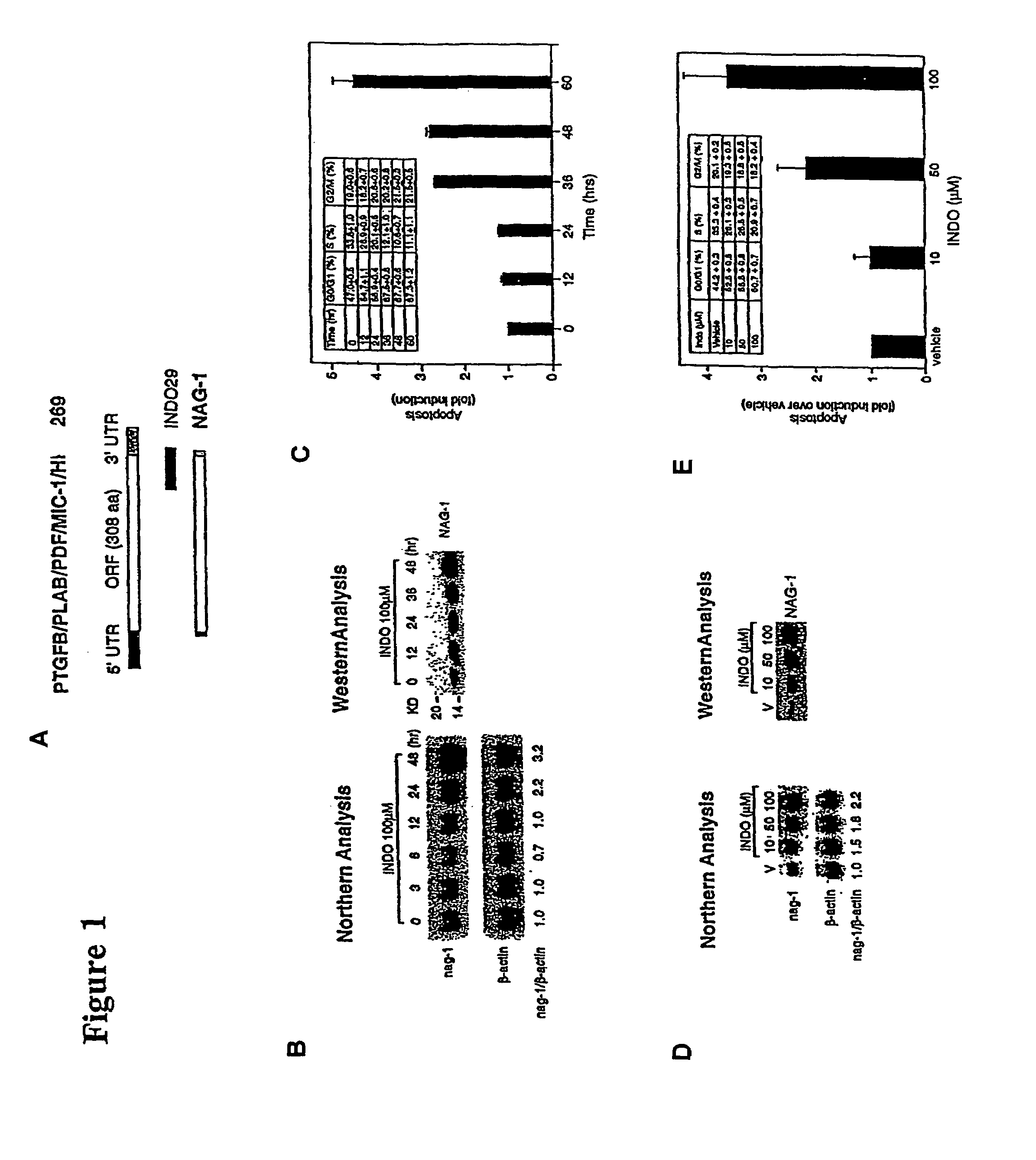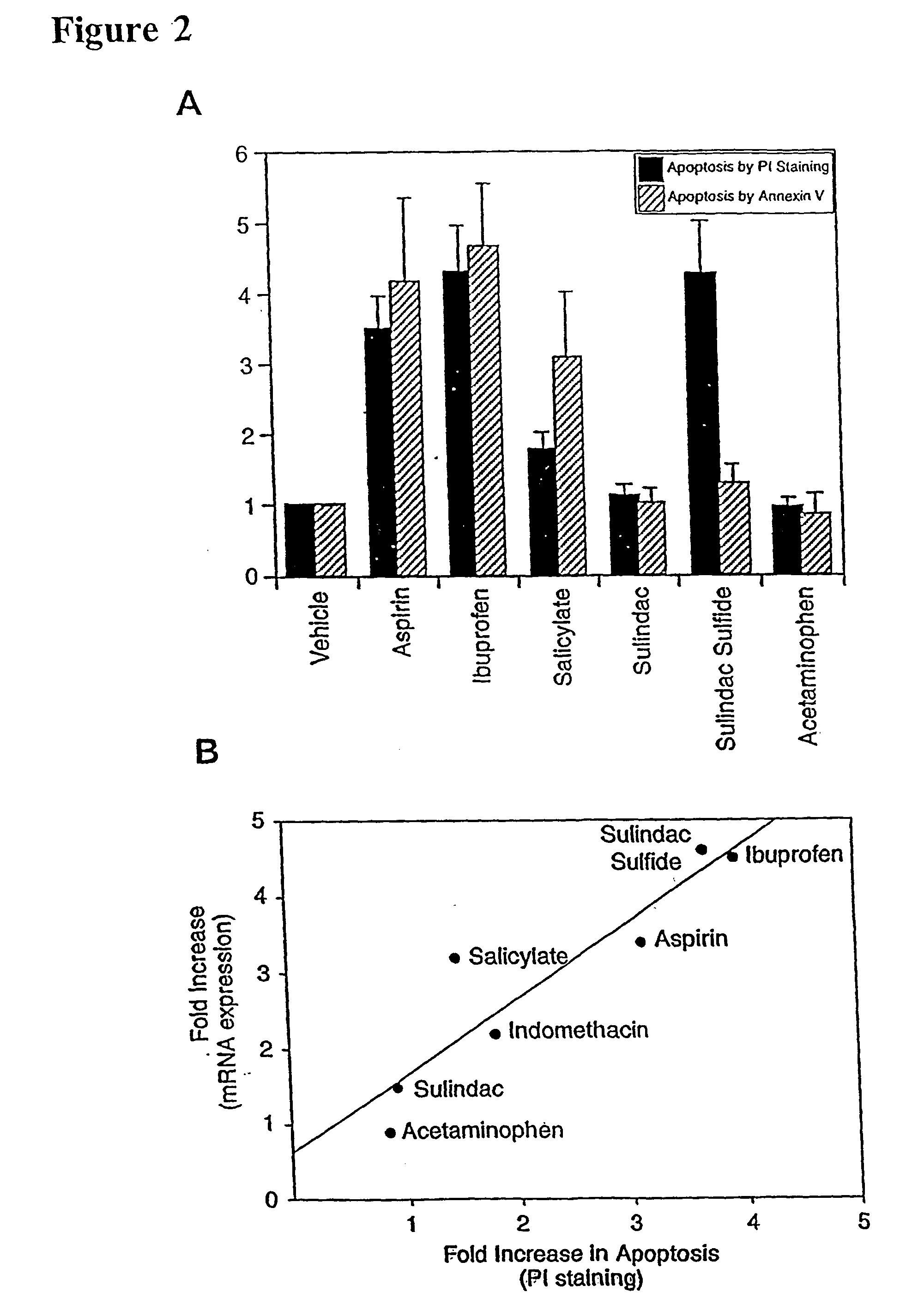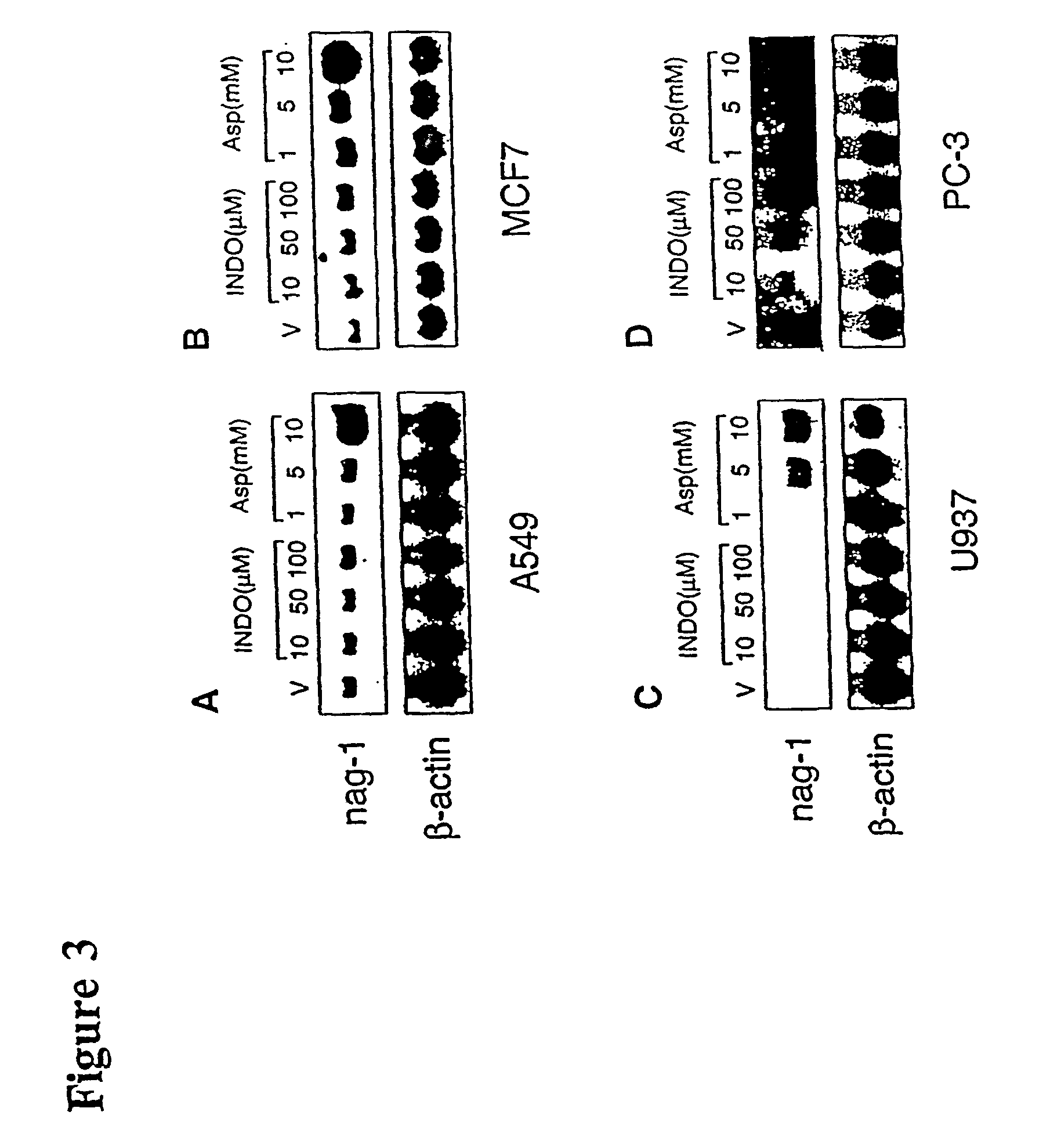Non-steroidal anti-inflammatory drug activated gene with anti-tumorigenic properties
a non-steroidal anti-inflammatory and activated gene technology, applied in the direction of drug composition, biological material analysis, apoptosis related proteins, etc., can solve the problems of insufficient information regarding the nsaid-induced or associated anti-cancer pathway, and achieve the effects of increasing tumor killing ability, increasing stability, and increasing solubility
- Summary
- Abstract
- Description
- Claims
- Application Information
AI Technical Summary
Benefits of technology
Problems solved by technology
Method used
Image
Examples
example 1
Identification of NSAID-Regulated Gene
[0124]Although an understanding of the mechanism is not necessary to use the present invention, this Example describes experiments to determine the possible molecular mechanisms for the anti-tumorigenic activity of NSAIDs. These experiments involved the determination of whether NSAIDs could stimulate the expression of proteins which could participate in both the anti-inflammatory and anti-tumorigenic activity of NSAIDs. Suppression subtractive hybridization methods were used to identify NSAID-inducible proteins. Cell lines used in these experiments were purchased from ATCC (Manassas, Va.).
[0125]Human colorectal carcinoma cells, HCT-116 cells, were maintained in McCoy's 5A medium supplemented with 10% fetal bovine serum (FBS) and Gentamicin. A549 human lung epithelial carcinoma cells, and U937 human monocytic cells were grown in RPMI 1640 medium supplemented with 10% FBS and Gentamicin. Breast cancer cells, MCF-7 cells, were grown in EMEM medium ...
example 2
NAG-1 Expression and Apoptosis Induced by Indomethacin is Dose- and Time-Dependent
[0128]To confirm the increased expression of NAG-1 by INDO, Northern and Western blot analyses were performed using HCT-116 cells treated with 100 μM INDO for varying times, as follows. Upon reaching 60–80% confluence in 10 cm plates, the cells were treated at indicated concentrations and times with either different NSAIDs or PPARγ ligands in the absence of serum. Total RNAs were isolated using TRIzol reagent (Life Technologies) according to the manufacturer's protocol. For Northern blot analysis, 10 mg of total RNA was denatured at 55° C. for 15 min and separated in a 1.2% agarose gel containing 2.2 M formaldehyde, and transferred to Hybond-N membrane (AMERSHAM). After fixing the membrane by UV, blots were prehybridized in hybridization solution (Rapid-hyb buffer, AMERSHAM) for 1 hr at 65° C. followed by hybridization with cDNA labeled with [α-32P]dCTP by random primer extension (DECAprimeII kit, Ambi...
example 3
Stimulation of NAG-1 Expression and Apoptosis by Other NSAIDs
[0134]To determine whether other NSAIDs increased apoptosis and NAG-1 expression, tests were conducted to determine whether variants of NSAIDs induced NAG-1 gene expression and NSAID-induced apoptosis. Aspirin, ibuprofen, indomethacin, and sulindac sulfide were selected since they are known COX inhibitors. Sulindac, acetaminophen and sodium salicylate were also tested since these drugs are weak COX inhibitors but are reported to induce apoptosis. HCT-116 cells were treated with different NSAIDs (vehicle, 0.2% DMSO; aspirin, 10 mM; ibuprofen, 1 mM; sodium salicylate, 5 mM; sulindac sulfide, 50 μM; sulindac, 40 μM; acetaminophen, 100 μM) for 24 hr in the absence of serum. Northern analysis was performed using NAG-1 and β-actin as probes. Total RNAs were isolated from NSAID-treated HCT-116 cells after 24 hr treatment and Northern blot was performed using NAG-1 cDNA as a probe (data not shown). Each NSAID was tested at 3 diffe...
PUM
| Property | Measurement | Unit |
|---|---|---|
| Tm | aaaaa | aaaaa |
| temperature | aaaaa | aaaaa |
| diameter | aaaaa | aaaaa |
Abstract
Description
Claims
Application Information
 Login to View More
Login to View More - R&D
- Intellectual Property
- Life Sciences
- Materials
- Tech Scout
- Unparalleled Data Quality
- Higher Quality Content
- 60% Fewer Hallucinations
Browse by: Latest US Patents, China's latest patents, Technical Efficacy Thesaurus, Application Domain, Technology Topic, Popular Technical Reports.
© 2025 PatSnap. All rights reserved.Legal|Privacy policy|Modern Slavery Act Transparency Statement|Sitemap|About US| Contact US: help@patsnap.com



